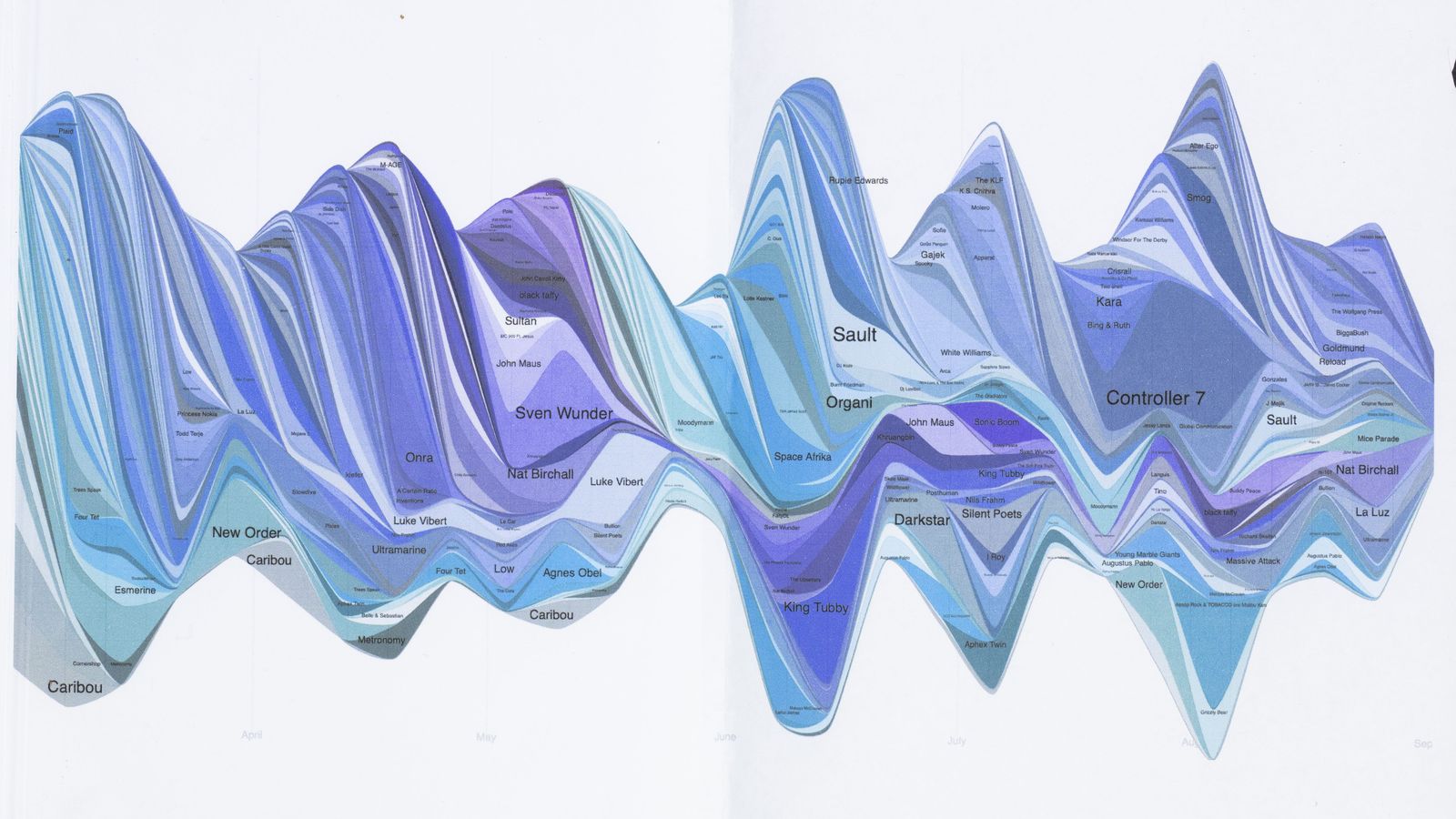Sebastian Chan

Sebastian Chan
Sebastian Chan is the Chief Experience Officer at the Australian Centre for the Moving Image in Melbourne. He finds the pandemic has created an unprecedented challenge for the future of design. The journal demonstrates graphical data Sebastian has collected during isolation and lockdown periods. From his dropping daily step counts to the decreasing social media output, Sebastian used precinct graphs to document his two lockdowns and daily life under isolation.
“Without a daily commute, I had expected my music listening to drop, or at least become less diverse. That was not the case.”
We asked Sebastian three questions about his experience of isolation, completing this journal and his hope for the future. These are his responses:
Describe the experience of the period of isolation for you.
My work over the past six months has been entirely online and from home - which, in terms of working in a leadership role in a cultural institution has been fascinating. Especially when we were meant to be opening a new building and much more. Some of the things we thought might be hard - creative conversations over video chat - have actually turned out to work well and allow quieter voices to be heard. On the other side, though, it’s been harder and harder to design for the future when that future keeps changing day to day - and days blur together. School from home has brought new tensions and stresses - but the cats have bene very content.
What does your book represent and how did you approach the challenge?
I’ve done some very basic sketches of data collected about my behaviour during March to August as a way of trying to think through how isolation and COVID lockdowns in Melbourne affected where I travelled to, what I listened to, my social media participation, my NBN data and energy usage. Most of my work is done digitally - through and on screens - so doing this ‘on paper’ task was a little challenging to be honest!
What do you hope will change in Australia as a result of the pandemic?
A reorientation of our economy and social safety nets. If anything, the pandemic has shown up the fault lines that existed in our society prior - and also some of the ways in which we might choose to address them. The myths about government debt, precarious labour, underfunding of health and support services have all been revealed - alongside the challenges of being in such an interconnected and interdependent world. We have also seen what leadership looks like as well as the flaws in our media industries as well as the problems that emerge when the wildfire spread of social media crashes headlong with people in varying states of stress and coherence.
Prior to becoming ACMI's CXO, Sebastian Chan led the digital renewal and transformation of the Cooper Hewitt Smithsonian Design Museum in New York (2011-2015) and drove the Powerhouse Museum's pioneering work in open access, mass collaboration and digital experience during the 2000s. He has also worked as a museum consultant with institutions across North America, Europe and Asia; and was a member of the Australian Government's Gov2.0 taskforce.
Sebastian's work has won awards from American Alliance of Museums, One Club, D&AD, Fast Company and Core77. He is an Adjunct Professor, School of Media and Communications, in College of Design and Social Context at RMIT. Sebastian also leads a parallel life in digital art and electronic music.
View Sebastian Chan's journal here:
Image: Sebastian Chan, Design/Isolate Journal (detail), 2020.
